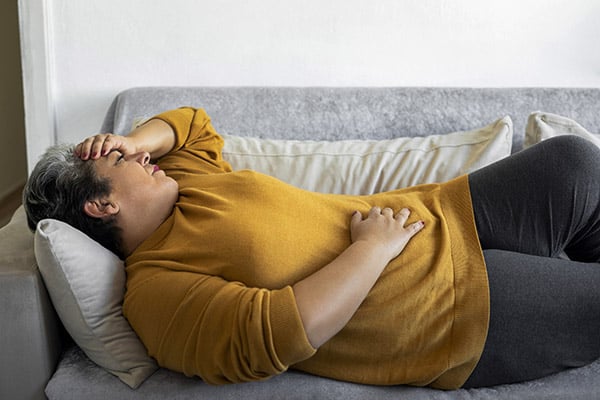What You Should Know About Kidney Stones: 6 Signs
March 12, 2024

Why do kidney stones hurt so much? Try forcing a square peg through a round hole, and you’ll get the picture.
We typically associate kidney stones with severe pain. However, a number of less alarming signs could be telling you stones are building in your urinary tract.
Because some of these symptoms could mislead you into thinking you have a different condition (because they mimic other ailments), this blog will help you understand the difference.
How Your Body Makes Stones
Stones begin as tiny crystals, formed by a high concentration of chemicals such as calcium and oxalates (salt), combined with a low level of urine. An estimated 80% of people diagnosed with kidney stones have calcium stones, but other minerals can crystalize, as well.
If you do not drink enough fluids to dissolve these substances, they could bind and draw other elements to them, eventually becoming “stones.” If a stone becomes big enough, it can block your urine, potentially forcing it back into your kidney, ureter, bladder, and even urethra, causing an infection.
Overall, the risk of you developing a stone is one in 10.
The Other Six Symptoms (Besides Pain) of Kidney Stones
Kidney stone symptoms can kick in anywhere along your urinary tract, starting with the kidneys. These are located on either side of your spine, at the bottom of your ribs.
Besides pain, here are six common signs:
- A burning sensation when urinating; more frequency/urgency
- Bad-smelling and/or cloudy pee
- Blood in your urine
- Pain on your sides and/or lower back
- Fever and chills
- Nausea and or vomiting
Do not ignore these symptoms; call a doctor.
What to Expect: Treatment Options for Kidney Stones
Your doctor can diagnose stones through urine and blood tests as well as imaging (such as an ultrasound). Stones that are small enough might pass by drinking plenty of water and taking a pain medication.
But if a stone blocks your urine passage and causes complications, you’ll likely be advised one of these treatments:
Shock wave lithotripsy: In this non-invasive approach, targeted sound waves break up stones from outside the body.
Ureteroscopy: A minimally invasive procedure in which a scope reaches the stone though the bladder and breaks it down to be removed.
Percutaneous stone removal: For larger stones, the surgeon will insert a scope directly into the kidney through asmall incision in the back and remove the stones.
Not a Stones Fan? Here’s How to Prevent Them
Your diet can play a key role in stone formation, especially if it is high in proteins, salts, and sugars (especially from processed foods), and low in fluids. Obesity, certain medications, recurrent urinary tract infections, and inflammatory bowel disease also raise the risk.
With these factors in mind, here are a few best practices for preventing stones.
- Drink more fluids. Think 11 or more cups of water a day, which can come from fruits and vegetables as well as tea and coffee.
- Regulate animal proteins and salty foods. If you eat a lot of red meat and processed foods, replace a few servings with fruits and vegetables.
- Get your dairy.True, most kidney stones are formed by calcium, but when eaten it helps prevent stones by binding with oxalates before entering your kidneys, so the oxalates pass.
- Kick the habit. Tobacco smoke contains chemicals that studies have linked to stone formation.
A kidney stone can hit you square where it hurts, but you might be able to prevent it. Take care of your all-around health, and don’t ignore warning signs.
Visit our kidney stones website to learn more. If you suspect you have kidney stones, contact a specialist near you at one of MidLantic Urology’s 42 locations in Philadelphia and surrounding counties, here.

